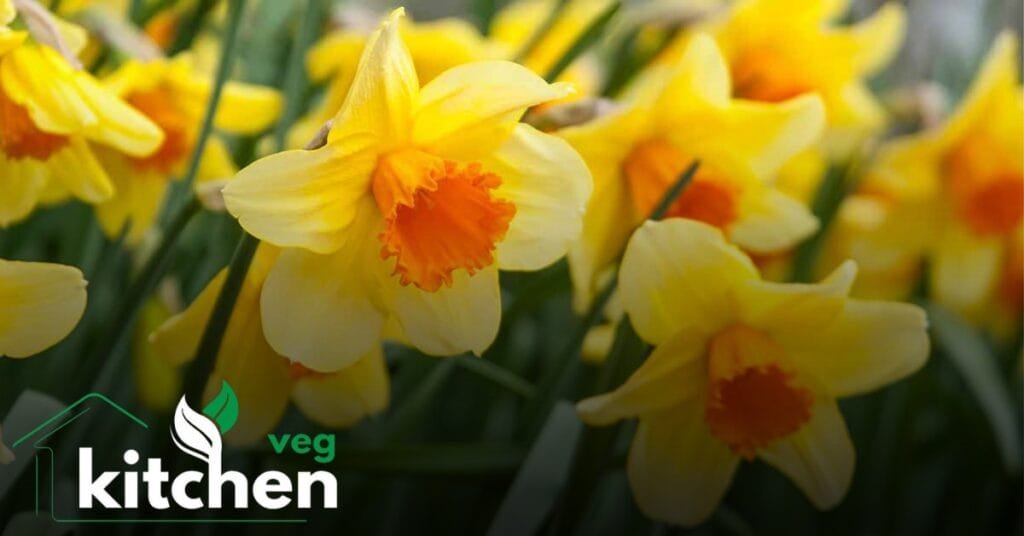Introduction
March flowers are among the first to bloom in the spring, signifying the end of winter’s hibernation and the beginning of rebirth. They are found in different kinds and variations, each with unique qualities and allure. This guide will look at the most common March flowers and provide information on how to grow them, care for them and interpret their symbolic meaning.
Popular March Flowers
Daffodils (Narcissus)
A common March flower is the daffodil or Narcissus. They are easily recognized by their corona, which resembles a trumpet, and their bright yellow or white petals. Hardy perennials that can withstand a range of temperatures, daffodils are renowned for their capacity to naturalize and proliferate year after year.
Crocuses
Crocuses are little cup-shaped blooms in a variety of hues, including purple, yellow, and white. These early bloomers frequently break through the snow’s remains to add colour to gardens. Crocuses are also popular lawn flowers, and they can produce a stunning floral carpet.
Primroses (Primula)
Pink, red, yellow, blue, and other hues are among the many shades of primrose that bloom early in the spring. Primroses are adaptable plants that do well in containers and garden beds. They grow best in cool, damp environments, and shady woodland settings are common places to see them in bloom.

Growing Conditions for March Flowers
Soil Requirements
The majority of March flowers like well-drained soil high in organic matter. Adding compost or well-rotted manure to the soil can make it more fertile and structural, creating the perfect setting for these early bloomers.
Light Conditions
March flowers usually prefer full sun over partial shade. Primroses frequently flourish well in somewhat shaded settings, especially in regions with warmer summers, while daffodils and crocuses prefer sunny spots.
Watering Needs
March flowers require regular irrigation to flourish healthily. Even though they require frequent moisture, keeping them out of the water is crucial since it might cause root rot. Retaining soil moisture with mulch around plants can help reduce the watering frequency.
Planting March Flowers
Timing
Fall planting is ideal for planting March flowers since it gives them time to grow roots before going dormant for the winter. This guarantees that they will be prepared to blossom when springtime temperatures start to climb.
Planting Depth and Spacing
The individual flower kind determines the planting depth and spacing. For instance, crocus corms should be planted 3–4 inches deep and 3 inches apart, whereas daffodil bulbs should be planted roughly 6 inches deep and 6 inches apart.
Care and Maintenance
Fertilization
Feeding March flowers with a balanced fertilizer in the early spring can encourage robust development and colourful blooms. Adhering to the suggested rates of application is crucial to prevent overfertilization, which may damage the plants.
Deadheading
Deadheading, or removing wasted blossoms, incentivizes plants to concentrate their energy on blooming new leaves rather than seeds. This technique has the potential to prolong the March flowering season.
Pest and Disease Control
Although generally hardy, March flowers are vulnerable to pests and illnesses. Routine inspections and timely resolution of any problems can maintain plant health. Aphids, snails, and fungal infections are common issues.
Symbolism and Cultural Significance
Daffodils
Daffodils are famous for spring celebrations and events because they represent rebirth and fresh beginnings. In various cultures, they are also connected to luck and prosperity.
Crocuses
Crocuses are among the first flowers to blossom after winter, so they are frequently associated with optimism and cheer. Their vivid hues have the power to uplift people and herald the advent of warmer weather.
Primroses
Primroses have long been associated with youth and rebirth. Flowers were frequently employed in the Victorian language of flowers to express sentiments of love and adoration.
Varieties and Hybrids
Daffodils
Daffodils come in various hybrids and varietals, each with unique qualities. The traditional yellow “King Alfred,” the white and yellow “Ice Follies,” and the double-flowered “Tahiti” are a few of the more well-liked varieties.
Crocuses
There are many other types of crocus, such as the enormous Crocus vernus, which has larger blossoms and comes in various hues, and the early-blooming Crocus tommasinianus, which is well-known for its lavender flowers.
Primroses
The types of primroses are equally varied; some examples are the delicate Primula auricula, the vibrant Primula polyantha, and the pale yellow Primula vulgaris.
Landscaping with March Flowers
Garden Beds
March flowers are ideal for designing colourful garden beds that herald the arrival of spring. Combining various kinds and hues can create an eye-catching arrangement that draws pollinators and lights up the yard.
Containers and Window Boxes
March flowers grow well in window boxes and containers, which are ideal for individuals with limited space. This allows patios, balconies, and windowsills to provide early spring colour and positioning flexibility.
Naturalizing
Many March flowers, especially crocuses and daffodils are great for naturalizing. They can be planted to resemble meadows under trees or in grassy regions, which will improve the overall beauty of the landscape.

Seasonal Pairings
Early Spring Bulbs
March flowers can produce a succession of blooms that prolong the flowering season when paired with other early spring bulbs, such as tulips and hyacinths. This combination can keep the garden colourful and exciting from late winter to early summer.
Perennials and Shrubs
Planting shrubs and perennials with later-blooming seasons can guarantee the garden looks colourful and appealing long after the March flowers have faded. Hellebores, bleeding hearts, and azaleas are among the options.
Eco-Friendly Gardening Practices
Pollinator-Friendly Gardens
March flowers are an essential source of nectar and pollen, which help to sustain early pollinators like bees and butterflies. Several early blooming plants can be planted to support these beneficial insects.
Organic Gardening
March flowers and the ecosystem of the garden as a whole can be healthier when organic gardening techniques like mulching, composting, and natural insect management are used. Refusing to use chemical pesticides and fertilizers promotes a variety of species and helps preserve the ecosystem.
Conclusion
March flowers are a beautiful addition to any garden. Their bright colours and cheery blossoms signal the advent of spring. Planting daffodils, crocuses, primroses, or a mix of these early bloomers will result in a stunning and flourishing garden. By being aware of their growing conditions, planting requirements, and maintenance demands, you can ensure that your March flowers thrive year after year and add delight and beauty to your outside space.




[…] March Flowers: Essential Guide to Spring Blooms for Your Garden […]
[…] a striking and versatile plant that belongs to the Malvaceae family. Known for its large, vibrant blooms and diverse species, hibiscus has captured the hearts of gardeners, botanists, and flower […]